
Travel and Life Abroad

Travel and Life Abroad
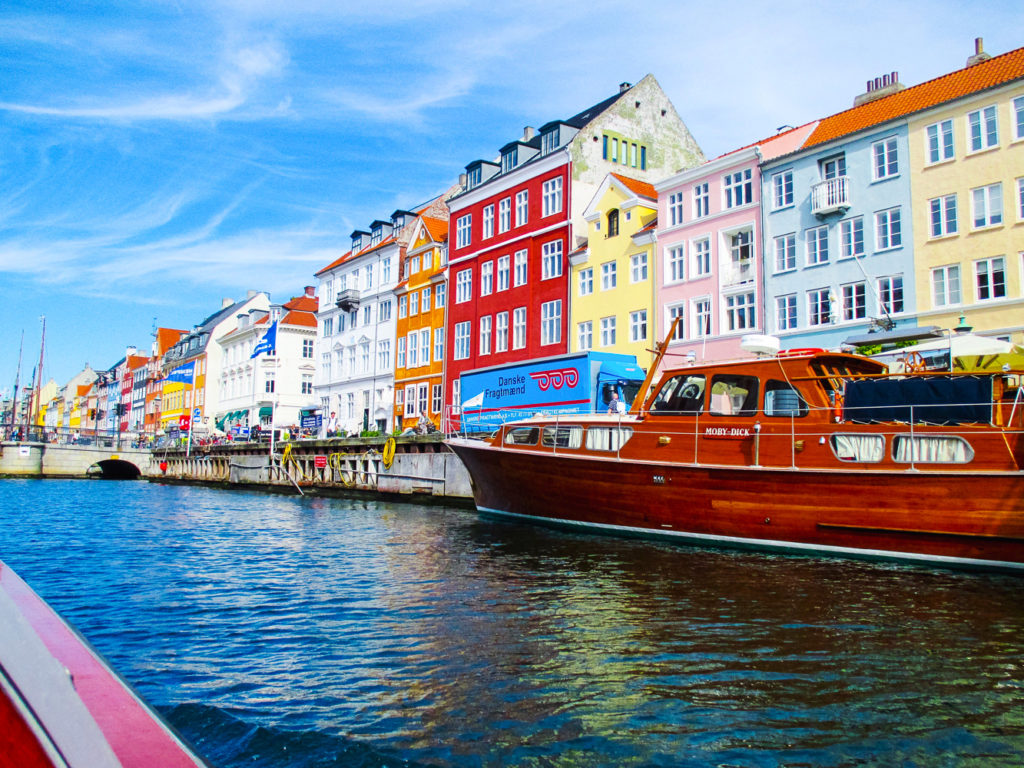
This post may contain affiliate links. If you buy through those links, I may earn a commission at no extra cost to you. You can read the full disclosure here.
You may have heard about the colourful, traditional streets of Copenhagen, but where are they? If you find yourself in most parts of Copenhagen and take a look at the buildings around, you will find that most of them are grey or brick red. But once you get off the beaten path, you can find some incredibly pretty, fairytale-like colourful streets. So if you’re willing to walk the streets most tourists don’t walk, I’ll share with you some gorgeous hidden gems.
Please be mindful that most of these suggestions are residential streets where locals do live. While no one will mind you exploring and taking pictures, they may be disturbed by excessive noise. Try to keep the quiet streets quiet.
I share this as the fist suggestion because it is the most popular. Regardless of the type of traveller you are, I don’t think you should leave Copenhagen without visiting Nyhavn. It is centrally located and easy to access; just a two minute walk away from the Kongens Nytorv Metro station and a 5 minute walk from the Nørreport station.
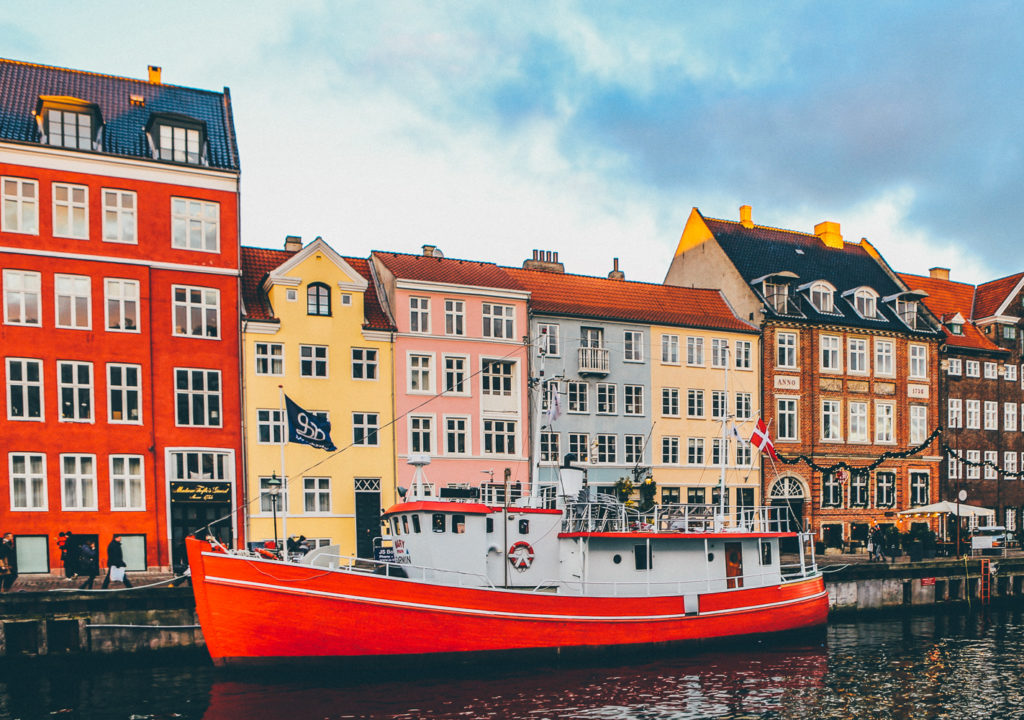
As it is a very touristy spot, Nyhavn is quite busy. If you plan on taking pictures, try to go around sunrise. Both sides are lined with colourful buildings, but the side with the restaurants is by far the busiest. If it gets too busy, you can cross the bridge over to the other side. The side with restaurants is closed to vehicle traffic, but the other side is not, so beware of that. However, there is only light traffic.
The walking path along Nyhavn is narrow and lined with cobblestone, so make sure to wear walking shoes. Also hold on to the little children so they don’t fall into the canal as there are no safety guards or railing.
TIP: Take a canal tour during the day as it gives you a look at the colourful buildings from a different angle. In the evening, at/ after sunset sit outside at one of the restaurants for some Smørrebrød. If the restaurants are too expensive, you can do what the locals do. Buy something to eat and drink from a nearby grocery store or 7-Eleven and sit down on the wooden beam along the canal.
In my opinion, this is Copenhagen’s best kept secret! When I discovered the street accidentally, it felt like I was seeing an oasis in the desert. I was out for a walk, and all the buildings around me were beige or grey. As I was coming to an intersection I randomly looked to my right I saw the cutest, most colourful little street.

Krusemyntegade is only a 5-7 minute walk away from Nyhavn, and the best part is that nobody knows about it! If you are a travel or fashion blogger, you will love taking some pictures here. There is virtually no traffic and you can take as many pictures as you like, both from the sidewalks and the middle of the street. Just be mindful not to make too much noise as this is a residential street.
A 10-15 minute walk away from Nyhavn you will find Overgaden Neden Vandet, located in the Christianshavn neighbourhood of Copenhagen. It runs along the Christianshavn Canal and has a bit of a Dutch vibe to it. To get here, you can either walk, or take the metro and get off at Christianshavn station.
The street is partially open to traffic, but it isn’t very busy. There will be a few locals and passers-by; don’t expect to have Overgaden Neden Vandet all to yourself like some of the other streets I mention in this article. However, it won’t be as busy as Nyhavn.
If you’re taking a canal tour from Nyhavn, this street will be included.

This colourful street is located in the peaceful, residential neighbourhood of Østerbro. If you are not staying in the area, you might not even pass through Østerbro as there aren’t many attractions for travellers.
If you choose to visit Olufsvej, it is located steps away from the Trinaglen St. Metro Station. As with Krusemyntegade, Olufsvej has very little traffic and is a great place to go for taking pictures if you’re a travel/ fashion blogger.
Østerbro is one of my favourite neighbourhoods in Copenhagen. If you have the time, I would strongly recommend you go for a walk around and catch a glimpse into how the (middle class) locals live. As it is a residential area, there are a lot of restaurants and bakeries in Østerbro. So if you get tired, grab a meal or a pastry.

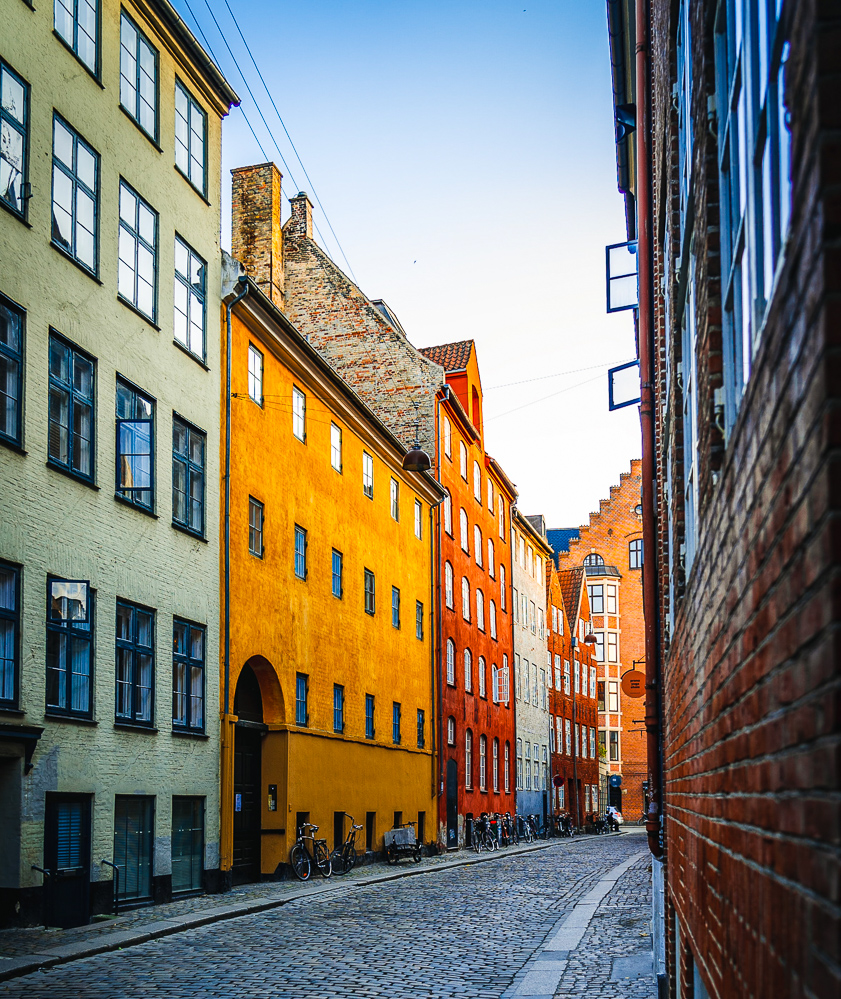
Located steps away from the famous Strøget shopping street, Magstræde is one of the oldest streets in Copenhagen. You won’t find many stores on this street. It is mainly residential, with a few restaurants. Therefore Magstræde is fairly quiet, and great for taking pictures. However, Magstræde is no longer a little secret, so expect to find a few passers-by. The Street is open to traffic, but it’s unlikely that you will come across many cars. There may be a few cyclists.
The street is home to the very popular Gorms Pizzeria. If you’re getting tired of all the walking, go inside and grab a bite to eat in a very traditional, rustic setting.
These bright orange barracks span over a few streets, and are located only a few steps away from Krusemyntegade. They were originally built to house personnel of the Royal Danish Navy and their families. Nowadays they still house members of the military, but civilians are also able to apply for living at Nyboder.
Nyboder means new little house, and some of the earliest homes date from 17th century. So if you’re looking to see some old Danish homes that stood the test of time, this is the place for you. Nyboder spans over a few streets (which are named after animals). Most of the time, there are very few cars and people around and you can feel like you almost have the whole place all to yourself. It is located around a 15 minute walk away from Nyhavn, and steps away from Kastellet.
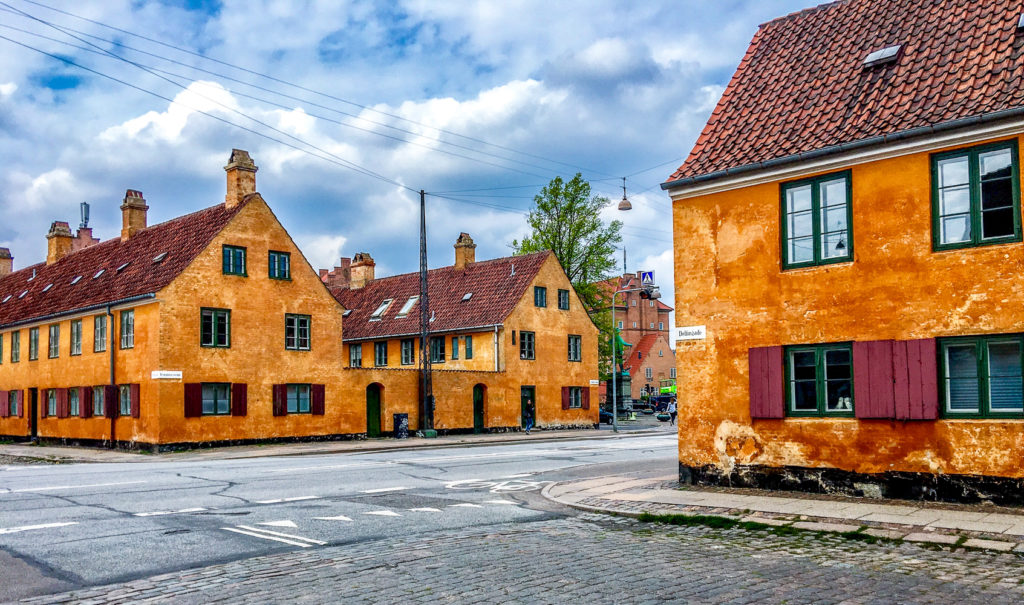

This star-shaped fortress dating back to the 17th century is home to quite a few colourful buildings. Most of them are bright red, and some yellow. The grounds also include a church, windmill, as well as the Monument for Denmark’s International Effort since 1948. Most of the buildings on the grounds are used for military activities. There is one main street, and the buildings are scattered around.
Also known as the Citadel, Kastellet is surrounded by water on all sides and there are two bridges you can cross to enter. It is free and not very busy, even in the height of tourist season. It is entirely covered in cobblestone, so bring walking shoes. There is very little vehicle traffic, but that’s not a problem at all since the grounds are quite wide. Just be aware of that when crossing the bridge and stay on the pedestrian side. And if you come all the way to Kastellet, you might also visit the Little Mermaid, which is steps away.
Not one street, but a neighbourhood consisting of a couple of very colourful streets. The Latin Quarter includes Sankt Peders Stræde, Larslejsstræde, Studiestræde, Larsbjørnsstræde, and more. The old University is located here and many years ago, Latin language was widely spoken at and around the university hence the area was called the Latin Quarter.
The streets are open to traffic, but if you wander around you are bound to find a couple smaller streets with little to no traffic. These streets are great for taking pictures, but most of them are quite narrow and as a result, dark. However, the buildings are very old and it feels like you are travelling back in time. There are a couple of small boutique stores selling a variety of vintage and clothing items, as well as a couple of bakeries. The neighbourhood seems quiet in the daytime but it comes alive at night thanks to the presence of a few nightclubs.

While it isn’t a street, Christiania is perhaps the most colourful place in all of Copenhagen. If you are not familiar, Freetown Christiania is an international community of around 1000 residents, located in the neighbourhood of Christianshavn. Christiania was formed in 1971 after a few people moved into abandoned military barracks and proclaimed it a free town. It was intended to be a self-governing society. Nowadays the residents have purchased the land from the government and the community abides by Danish law.
Originally drugs (including hard drugs) were allowed in Christiania, although it was (and still is) illegal in Denmark. As a result taking pictures and/ or videos was strictly prohibited in Christiania. It is now permissible to take pictures of some buildings and art structures; just look for the “photo ok” signs.
The community is closed to vehicle traffic, however, it has become a popular tourist destination. Expect to see a few people. There are a restaurants, cafes, and playgrounds, if you need to take a break. Christiania consists of a lot of makeshift art, living areas, recreational spaces, and farming lands. When visiting, be mindful and respectful towards the locals who live there. Some of them are not particularly fond of their neighbourhood becoming such a big tourist destination.
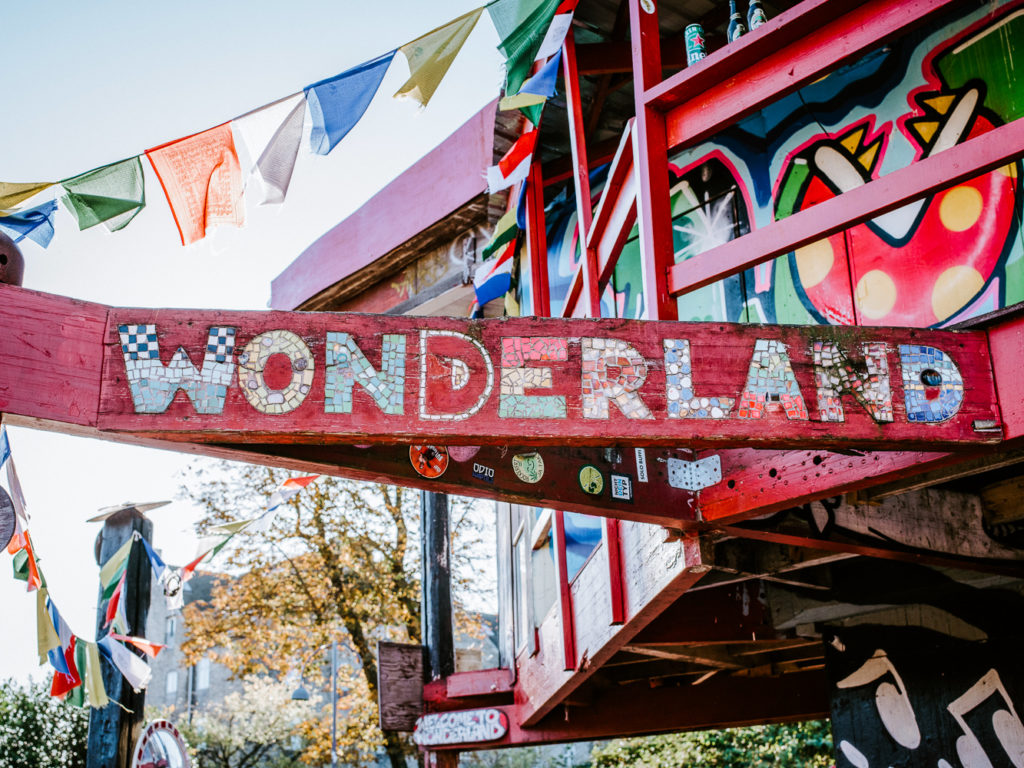
To summarize, these have been my top colourful streets in Copenhagen:
Do you know any other hidden gems not mentioned in this article? Let me know in the comments bellow.